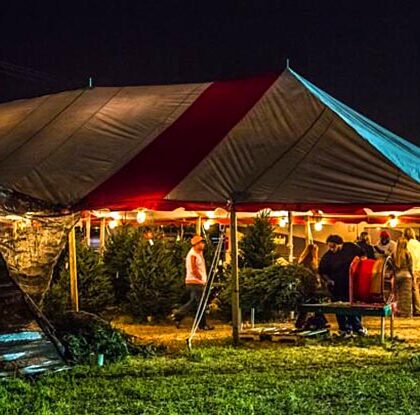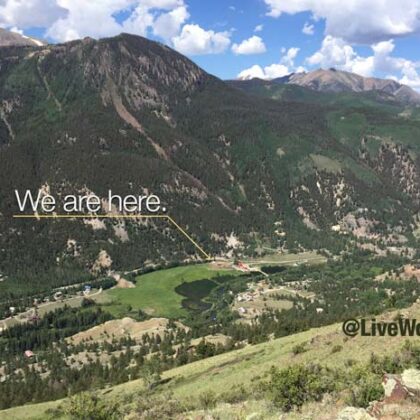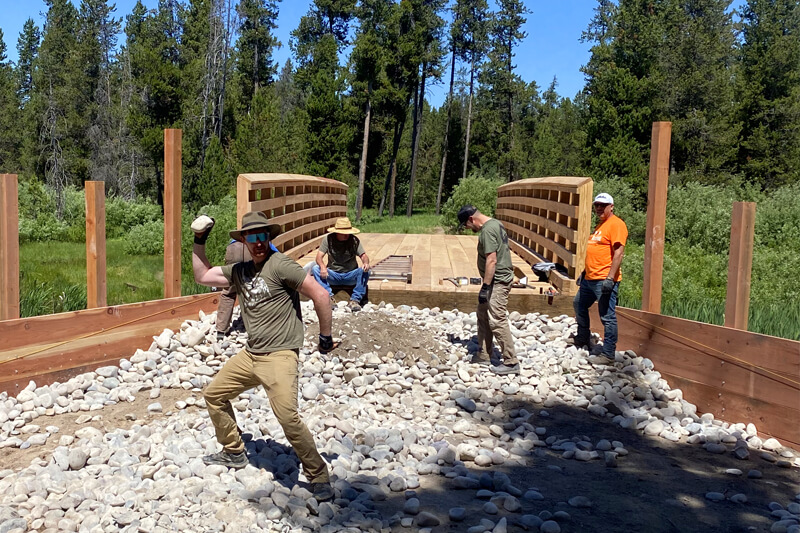
by Greg Gerber
For thousands of people each year, the call of the wild isn’t just about breathtaking vistas, peaceful hikes or crackling campfires under the stars – it’s also about giving back.
Across the United States, volunteers are discovering meaningful ways to serve at state parks. By offering their time and skills, they’re helping preserve natural beauty, enhance visitor experiences, and build lasting community connections.
Behind the Scenes: State Park Volunteers Make It All Happen
One person helping coordinate this movement is Trish Hendrickson, the Volunteer Services Coordinator for the Idaho Department of Parks and Recreation. Each year, Trish recruits and manages hundreds of volunteers across 30 public recreation sites.
To her, volunteering in state parks goes far beyond a seasonal Workamping gig. “It’s an opportunity for purpose, connection, and exploration,” she said.
“Our camp hosts are kind of the backbone of our volunteer program. They’re often the first faces visitors see when they pull into the campground. They help welcome guests, explain the rules, direct people to their sites, and can even sell firewood.”

More Than Just a Free Campsite
State parks from coast-to-coast rely on dedicated volunteers, many of whom serve as camp hosts or fill other essential roles to keep parks running smoothly.
In exchange, these volunteers typically receive a free campsite – often with full hookups – as well as a free pass to all state parks, and the opportunity to immerse themselves in the natural surroundings for weeks or months at a time.
In Idaho, volunteers commit to at least 20 hours per week to qualify for their host site, usually over a period of three to six months. While that might sound like a part-time job, Trish says the experience rarely feels like work.
“Volunteers aren’t just stocking bathrooms or answering questions,” she said. “Many help run visitor centers or museums, lead nature walks, and even deliver interpretive programs. And we have ‘plug-and-play’ educational kits, so anyone can get involved and no teaching degree is required.”
This model isn’t unique to Idaho. Across the country, state parks in places like Florida, Oregon, Texas and Michigan also offer similar arrangements. The agencies pair enthusiastic volunteers with park needs ranging from trail maintenance and habitat restoration to guest education and event coordination.
Volunteering is a Perfect Fit for Retirees, Families, and Solo Travelers
Volunteering at a state park is especially appealing to retirees or semi-retired individuals who have the flexibility to travel and spend extended time in one location. Many, like those Trish recruits, are RVers seeking meaningful ways to spend their summers.
“Some of our parks, like Farragut State Park, bring on as many as 50 volunteers during the season,” she said. “They even have a ‘volunteer village,’ or an entire campground set aside just for our hosts. It becomes a real community.”
But it’s not just for couples or retirees. Solo travelers are just as welcome, and families are becoming an increasing part of the mix. As long as children are supervised by a non-working adult, families with children and teenagers can get involved, learning together and making memories along the way.
“We’ve absolutely brought teenagers into the volunteer fold,” said Trish. “Depending on their age, we can find a spot for them and give them their own volunteer agreement. It’s a great experience for young people.”
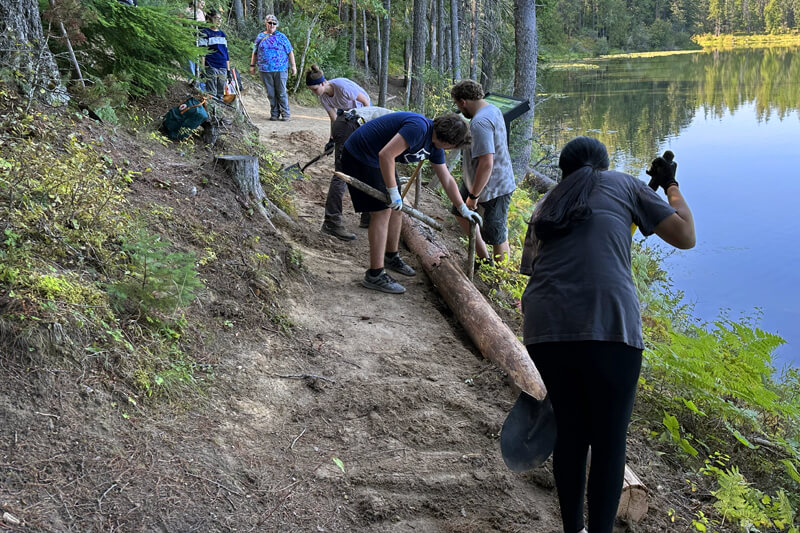
Flexible Schedules and Custom Roles
One of the most attractive elements of volunteering at state parks is the range of options and the flexibility to tailor an experience to match one’s interests or skills.
“We really make a big effort to understand what our volunteers are looking for,” Trish explained. “If someone has a background in carpentry, maybe they’ll work on picnic tables or signage. If they love teaching, we’ll loop them into our interpretive programs. It’s all about matching passion to need.”
Volunteers can often shape their own schedules. While parks generally ask for five days of service per week, many work campers negotiate which days they’ll serve and when they’ll take their time off.
“Most of our volunteers work four to eight hours a day, five days a week, and they get two full days off to explore the area,” said Trish. “It’s important to us that people have time to enjoy where they are.”
Perks Beyond the Hookups
Beyond the free campsite, volunteers often receive uniforms, small thank-you gifts and – at least in Idaho – a free state parks pass for the year. But, Trish believes the real benefit is less tangible.
“The main perk is getting to experience Idaho,” she said. “We’ve got everything from sand dunes to alpine lakes, high deserts to hot springs. You can spend a morning with coffee by the lake and cast a line right from your campsite. It’s magical.”
Indeed, volunteering provides a deeper connection to nature and a front-row seat to landscapes many only glimpse in passing. In states like California, hosts may find themselves among redwoods or coastal cliffs. In the Midwest, they might wake up to loons calling across glacial lakes. In New England, it’s fall foliage and colonial history rolled into one.
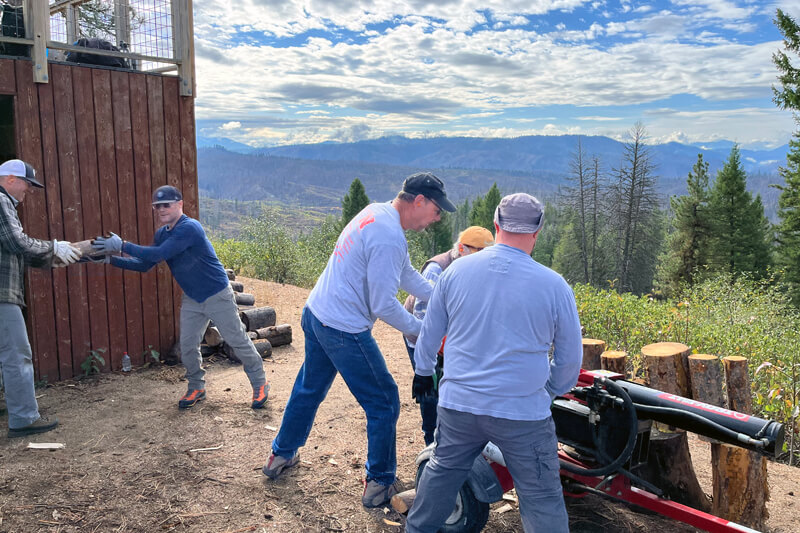
Volunteers Help Keep Parks Running
As state budgets tighten and park visitation climbs, volunteers are filling essential roles in parks across the country. In Idaho alone, around 430 volunteers support the parks system each year.
While most positions fill early, there’s always a need — especially for remote parks or last-minute openings.
“Sometimes we have incredible lakeside sites that are harder to fill because they don’t have sewer hookups,” Trish explained. “But if someone’s willing to do a weekly dump run or use a cart we provide, it’s totally worth it.”
How to Get Started
If you’re interested in volunteering at a state park, Trish recommends applying early — some parks begin recruiting nearly a year in advance. Many volunteers return year after year, and around 60% of Idaho’s volunteers are repeat participants.
“One of my goals is to get people to fall in love with Idaho,” she said. “Maybe they start in the southern part of the state and want to explore the north next year. That’s great! We welcome that kind of curiosity.”
A Purpose-Driven Way to Travel
The popularity of volunteering in parks reflects a broader movement among older adults seeking purpose-driven experiences after 50.
Rather than simply traveling for leisure, many want to feel useful, stay active and form community connections. State park volunteering offers all of that and more.
It also allows volunteers to explore regions of the country at a deeper level than traditional tourism. Some spend an entire summer in one location, getting to know the local culture, history, and even forging lasting relationships with staff and other volunteers.
“There’s a lot of camaraderie in these programs,” said Trish. “People make lifelong friends. They come back not just for the park, but for the people.”
From scenic hikes and lakeside mornings to interpretive programs and trail maintenance, state park volunteers are keeping America’s outdoor spaces vibrant and welcoming. And for many, what they find in the pines isn’t just a beautiful view — it’s a renewed sense of purpose.
Learn More About Volunteering in Idaho State Parks:
Visit parksandrecreation.idaho.gov or check out the Idaho State Parks and Recreation Volunteers page on Facebook.
Thanks for reading the Gone Workamping blog from Workamper News. Join Workamper.com today to see all the new job opportunities for RVers, as well as the training and resources to confidently find the right Workamping job for you – easily and securely.


